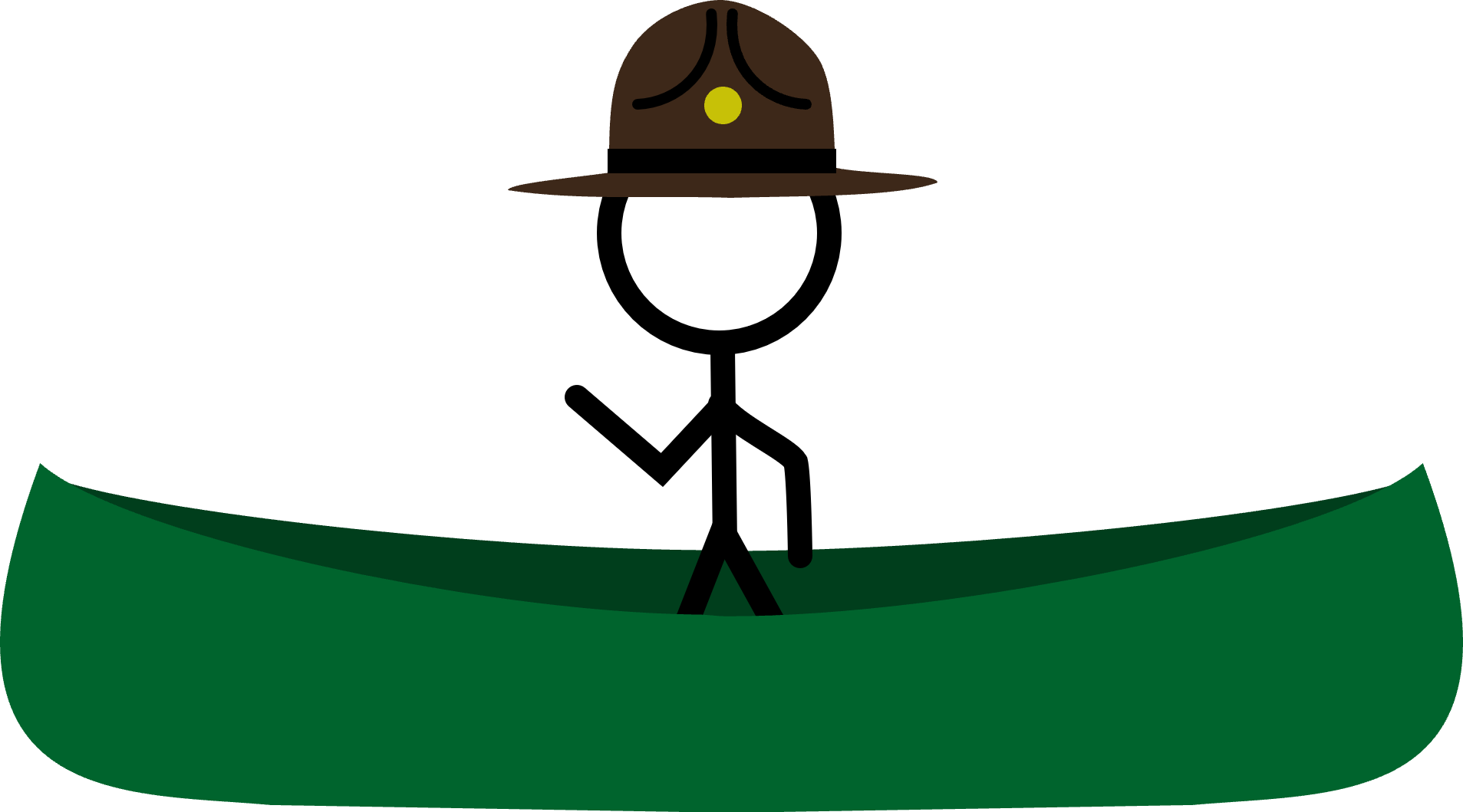
Your paddle is an important part of your paddling experience. On long journeys, a paddle will have a significant impact on how much effort is needed to get where you are going. Using the wrong paddle may cause wrist pain and other problems.
This is an example of a straight paddle.
Bent paddles are sometimes used by certain types of paddlers, such as those racing outrigger canoes. They allow for increased performance with the forward stroke, but make other strokes and maneuvers more difficult.
It is important to select the proper sized paddle for your needs. There are several ways to measure a paddle.
The best way is to measure it from your canoe, seated as you normally would be with the gear you would normally carry. Place your paddle in the water so that the throat of the paddle is level with the surface of the water. The grip of the paddle should be around shoulder level.
Another way of determining the proper paddle size is to use the crouching method. Crouch down to simulate being in a cane with the paddle upside down. The throat of your paddle should be between your nose and shoulder.
This popular method can be done on dry land. Sit and measure the distance between your seat and nose. Add about 26 inches and that should be close to the overall Paddle Length you want to have.
This is similar to the other Seated Method, but measure the shaft only. This is important since paddle have different blade lengths. Measure chin to seat and add 6 inches. This is the SHAFT Length of the paddle you want.